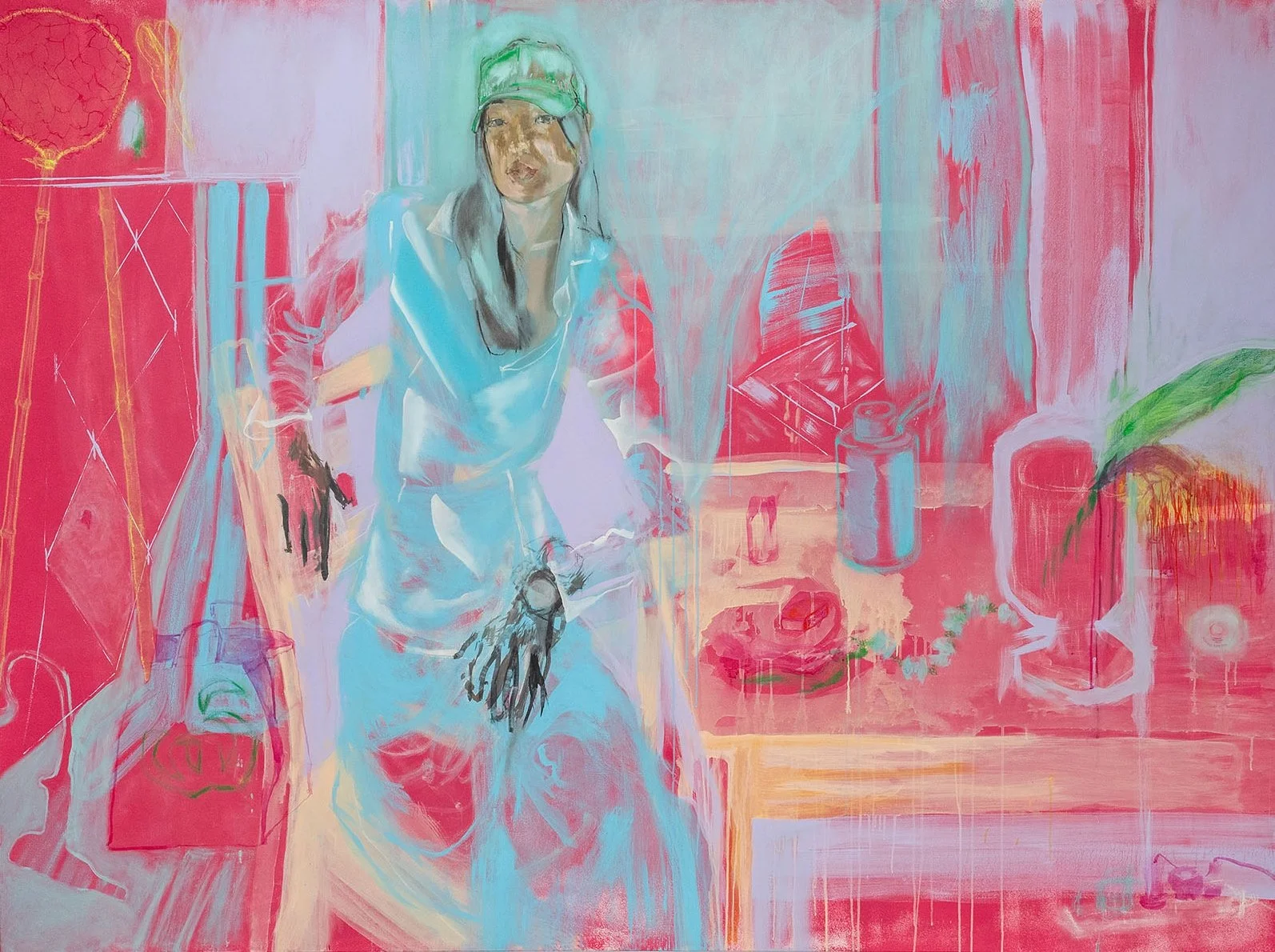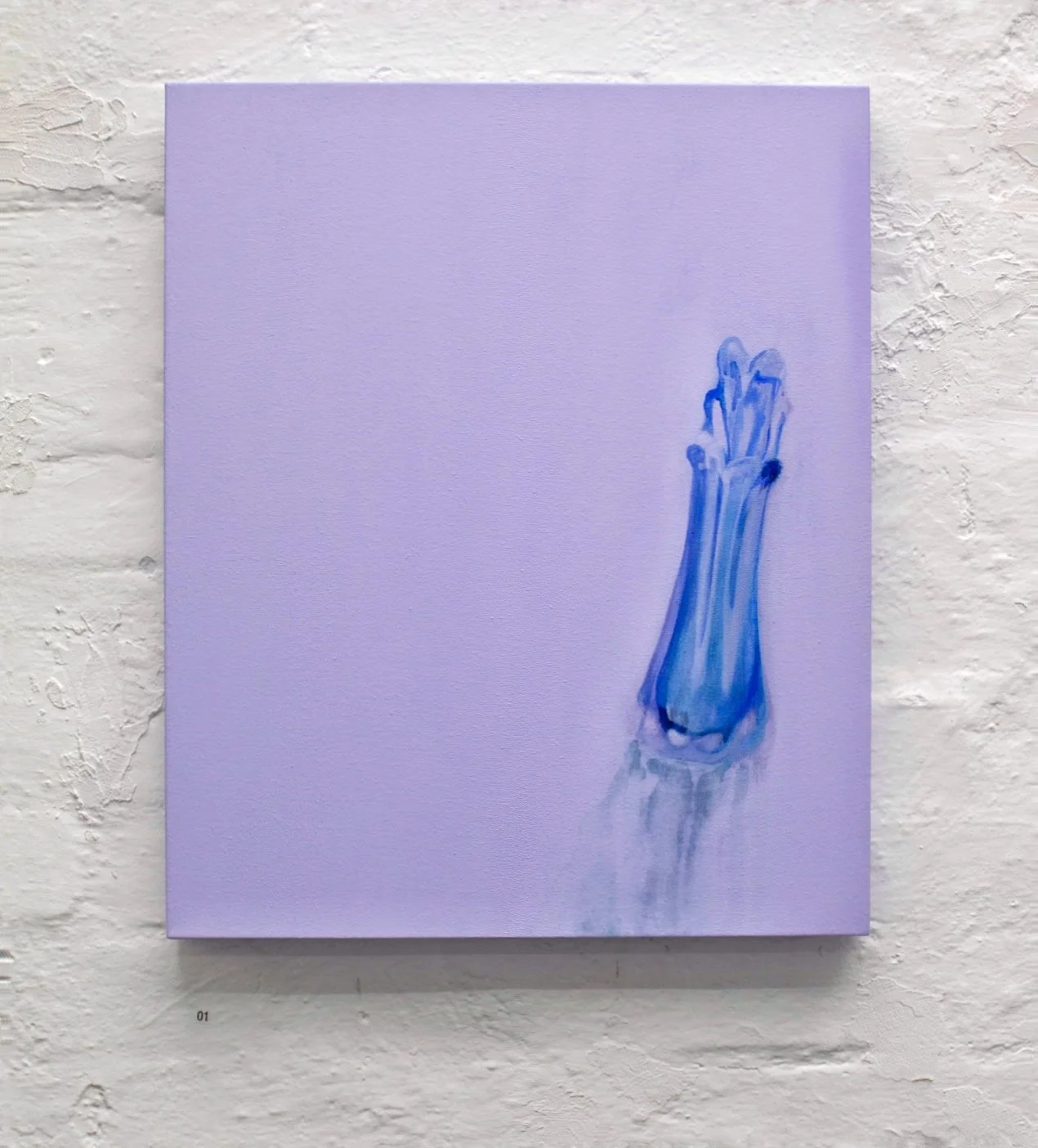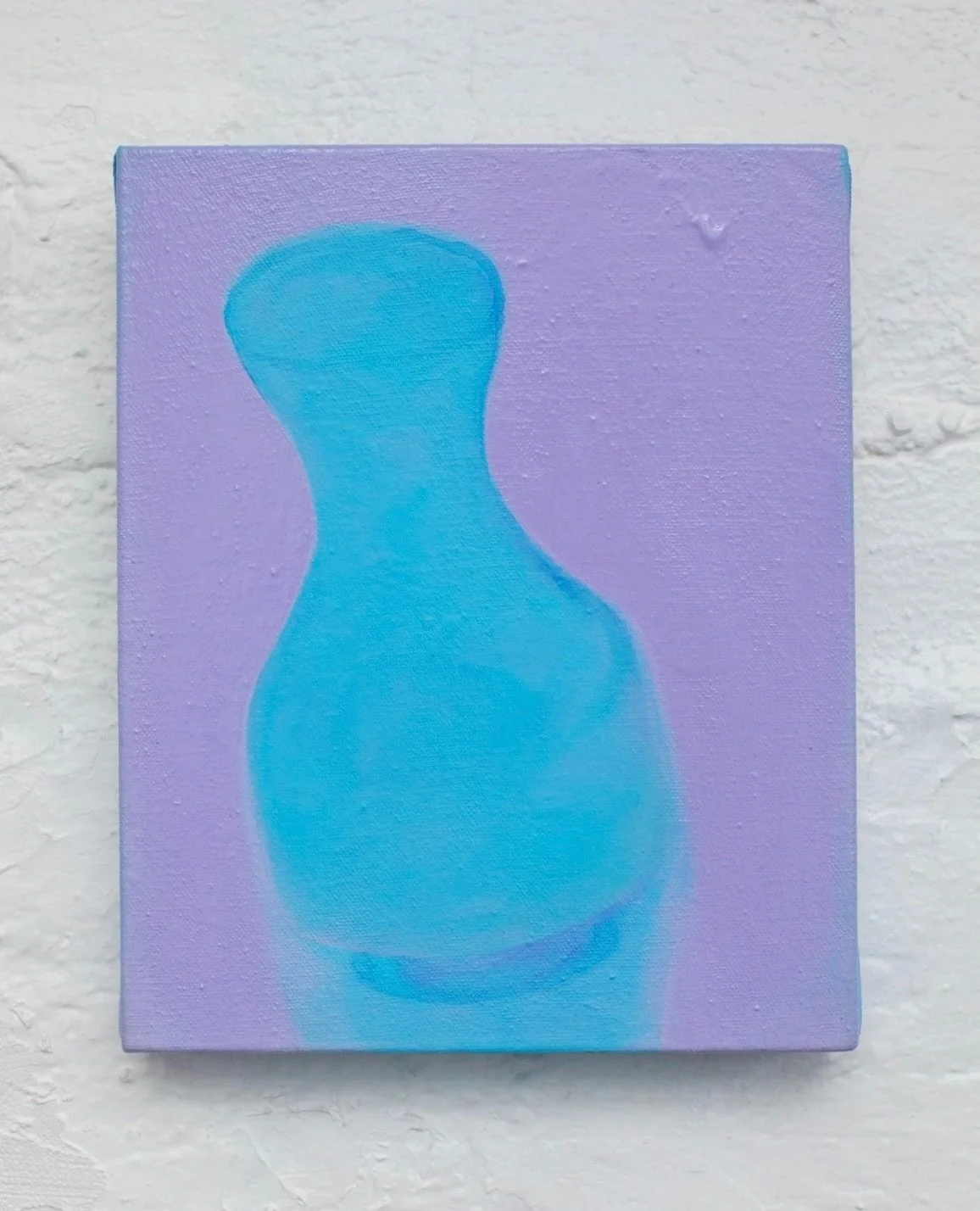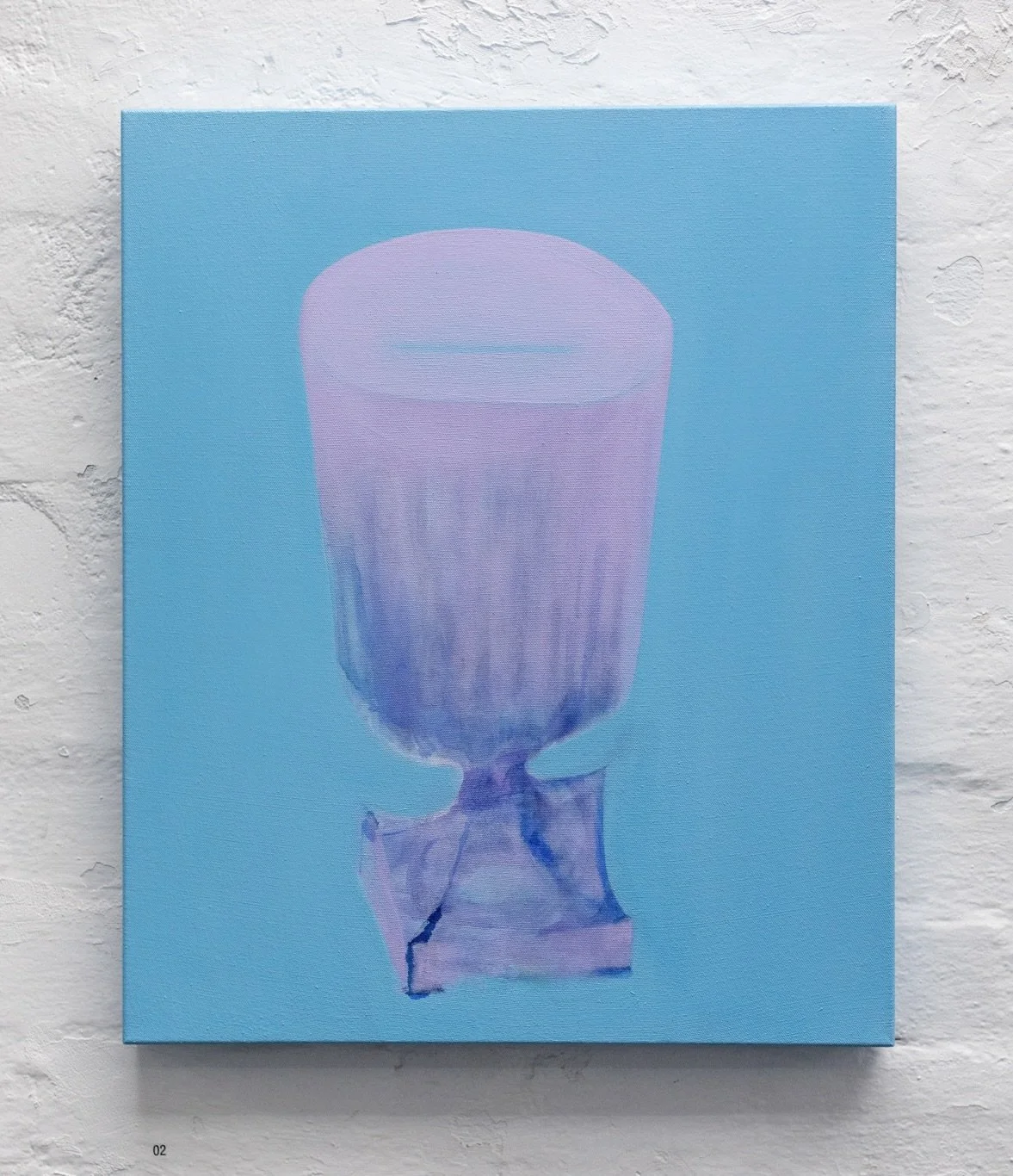*FALLS* , Landslide Gallery. 29/03/25-06/04/25.
*FALLS* explores the dissolution of a three-year relationship, capturing the remnants through expansive figuration, installation, and contemporary still life painting. Shaun delves into the complexities of romantic grief—what is kept, taken, given, and lost — and interrogates how the intensity of emotional attachment to objects of significance can be archived before they fade. Through this process, Shaun reflects on the transformative nature of grief, revealing it as both a baptismal and triumphant experience. In a world obsessed with accumulation, *FALLS* questions how we navigate the aftermath and what to do with the things that remain.
The exhibition is accompanied by a text by Joanna Cho, subject of the painting Portrait of the poet Joanna Cho: It all has to end somehow (Cho, p.44), 2025, and recipient of the Biggs Family Prize in Poetry.
Wentworth Falls
By Joanna Cho. Author of People Person (2022), Te Herenga Waka University Press.
Jonty messaged me that night: When you left I had that feeling like when I was a kid and came home from a
friend’s sleepover. Do you know what I mean? It’s like a sad feeling. I laughed and said I usually couldn’t
wait to get home from sleepovers, that it was usually a relief. But it hadn’t been like that in Wentworth
Falls; we had had a lovely time.
My boyfriend and I had gone to visit Jonty, my best friend, and his boyfriend Shaun. I hadn’t seen Jonty in
two years, and had only met Shaun once, briefly, in an art gallery over the Christmas holidays. It was the
start of summer, and we lugged our suitcases from the train station, through the mountain town, through
the prickly heat. It was strange to think of Jonty living somewhere with no Uber. When we finally got to
their house, I saw things – a bushel of eucalyptus pinned to the shower wall; velvet cushions, plush on a
boucle sofa; candlesticks, framed pictures, plants – that made me realise that this was a place where
beautiful things weren’t just collected, but experienced. I would think about this five months later, when
they broke up.
We stayed in the spare bedroom. At night I heard the bush through the screen door – a sort of rushing, like
city traffic on a rainy day. In the morning I lay listening to Shaun and Jonty’s footsteps on the hardwood
floors. I smiled and thought, So this is your life. I watched them move around the kitchen with ease, making
coffee and eggs in synchronicity, and then Shaun went to work and the rest of us went for a walk in the
mountains. It was impossible to comprehend the scale of it – trees and trees and trees, like a puzzle you
would hate to solve. After a few hours, we found what we were looking for – a small pool at the edge of a
rock face, one hole in a long brown belt, the water falling into great heights – and we swam. When Shaun
finished work, we met him at the station and walked home. He and Jonty walked ahead of us, their
shadows enlarged by the ripening sun, and we couldn’t hear what they were talking about but we laughed
at their body language: Shaun, boyish and bouncy, stumbling in his excitement to tell his man all about his
day; Jonty, usually stoic and hard to read, softening and opening. I sensed Jonty was proud to be showing me
this.
1. Norigae is a traditional Korean accessory used in Hanbok. It is made of silk tassels, knots and charms or small ornaments, often with symbols denoting luck. It is usually passed down a family line. The word 노리개 originally referred to ‘pretty and playful objects’ or ‘favourite trinkets’.
We walked home in the dark. We found a snake writhing on the still-warm asphalt. In death it remained
beautiful, drying in the heat, and the next day, Shaun came home from work and said the snake was still
there. That he noticed it mattered. When they broke up, I thought about how that mattered. I thought
about how they had created something beautiful and filled it with meaning; how beautiful things aren’t
negated by their endings. When we stood there beneath the streetlamp, watching the dying snake, Shaun
held on to Jonty’s arm, and Jonty looked up and caught my eye. He held my gaze for a moment, the silver
chain on his chest sparkling beneath my focus, and in that moment I thought we were both feeling
something deep and joyful. But we said nothing, just shared a small smile, enough to acknowledge
something, maybe time.
On our last morning, Shaun and I went through my suitcase, picking out things for the sitting: white shirt
and pants, pink kitten heels, a cap. We had just been in Korea and Taiwan, so I was carrying a lot of pretty
things. Jonty was working from home, but he left his computer and walked through the lounge every five
minutes to approve of what we were choosing. I had that feeling again – that I was experiencing just a
small part of their relationship, their life – but I also felt that for this small piece of time, we were all
standing in the same river.
I was sick, but I wouldn’t realise until we left – I would go on to have the worst flu of my life, bed bound in
Sydney for a week. But that morning I thought I was just exhausted from socialising, and I asked Shaun if I
could please have a coke, for the sugar. He got me a slim can and then took me to his studio out back. He
placed a norigae¹ of hand cut jade that my aunt had given me on the table – the Chinese character on it
symbolises good luck and happiness – and lit a candle. I was wearing Jonty’s watch. The door and windows
were left open, and the sun poured into the pop playlist. Shaun crouched over a floor-sized sheet of
paper, poured magenta paint into the corner, locked eyes, and began sketching. I tried to maintain eye
contact but I felt shy. It was the first time we’d been alone. But I told myself to try, for Jonty, and I sensed
Shaun trying too, and when it worked, we were in a car with the top down, driving down a gorgeous
country road, headed the same way.
Portrait of the poet Joanna Cho: It all has to end somehow (Cho, p.44), 2025.
Oil, acrylic, pastel, ink, charcoal, pencil, oilstick on canvas.
240cm x 180cm.



